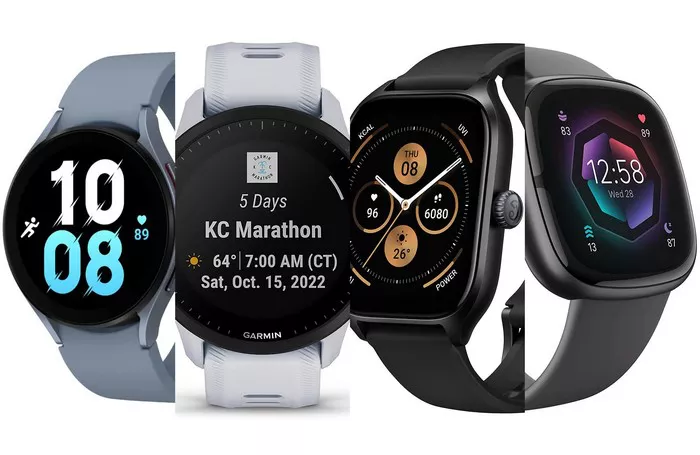Apple Watches have become an integral part of modern life, offering features like fitness tracking, notifications, and seamless integration with iPhones. However, with multiple series released over the years, identifying the specific series of your Apple Watch can be challenging, especially if you’re buying a used one or simply forgot which model you own. This guide will help you determine which series your Apple Watch belongs to by detailing the various methods and criteria you can use.
Understanding the Importance of Identifying Your Apple Watch Series
Before we dive into the steps, it’s essential to understand why knowing your Apple Watch series is important:
Compatibility: Knowing the series ensures compatibility with watchOS updates, apps, and accessories.
Repairs and Warranty: Identifying the correct series is crucial for warranty claims and repairs.
Resale Value: The series affects the resale value of your watch.
Feature Identification: Different series have distinct features that may be critical to your usage.
Physical Characteristics
Case Material and Color
- Aluminum: Most common material, available in various colors like silver, space gray, and gold.
- Stainless Steel: More premium look, often comes in silver, space black, and gold.
- Titanium: High-end models, usually in natural titanium and space black.
- Ceramic: Only available in specific series, white color, very distinct.
Case Size and Thickness
- Series 0-3: Available in 38mm and 42mm sizes.
- Series 4-6: Available in 40mm and 44mm sizes.
- Series 7-8: Available in 41mm and 45mm sizes.
- Apple Watch Ultra: Distinct 49mm case size.
Display Shape and Type
- Series 0-3: Rectangular display with more pronounced bezels.
- Series 4-7: Rounded edges with thinner bezels.
- Series 8 and Ultra: Flat-edged display with more durability.
Sensor Arrangement on the Back
- Series 0-3: Basic sensor array, typically smaller and simpler.
- Series 4-5: Added ECG functionality, different sensor arrangement.
- Series 6-8 and Ultra: Blood oxygen sensor, more advanced and larger sensor array.
Software and Features
Checking watchOS Version
- Series 0-3: Supports up to watchOS 6.
- Series 4-6: Supports up to watchOS 8 or 9.
- Series 7-8 and Ultra: Supports the latest watchOS versions.
Always-On Display
- Series 0-4: No always-on display.
- Series 5-6: Introduced always-on display.
- Series 7-8 and Ultra: Enhanced always-on display with higher brightness.
Health Features
- Series 0-3: Basic heart rate monitoring.
- Series 4-5: Introduced ECG.
- Series 6-8 and Ultra: Blood oxygen monitoring, improved ECG, and heart rate sensors.
Battery Life
- Series 0-3: Up to 18 hours.
- Series 4-6: Up to 18-24 hours.
- Series 7-8 and Ultra: Up to 36 hours for Ultra, 18-24 hours for others.
Using the Apple Watch App on iPhone
Finding the Model Number
Open the Watch App: On your paired iPhone, open the Watch app.
Go to General > About: Navigate to the “General” tab, then select “About.”
Locate Model Number: The model number starts with “A” followed by four digits (e.g., A2477).
Match with Series: Cross-reference the model number with official Apple documentation or online resources to identify the series.
Software Version Check
In the About Section: The software version can indicate the series since older series may not support the latest watchOS updates.
See Also: Should I Charge My Apple Watch Every Night
Checking the Back of the Watch
Model and Serial Number
Inspect the Back: The model number and serial number are engraved on the back of the watch.
Cross-Reference with Apple: Use these numbers on Apple’s official support page to identify the series.
Sensor Configuration
Analyze the Sensors: Different series have unique sensor layouts. Use this to distinguish between models.
Using the Apple Support Website
Serial Number Lookup
Visit Apple’s Support Website: Go to the “Check Coverage” page.
Enter Serial Number: Input your serial number to get information on your specific model, including the series.
Check Warranty and Coverage
Warranty Information: The warranty status often includes details on the series.
Comparing with Other Apple Watches
Visual Comparison
Compare with Friends or Family’s Watches: If you have access to other Apple Watches, compare physical characteristics like size, shape, and sensors.
Online Resources
Use Online Guides: Various websites offer detailed comparisons with pictures that can help you identify your series.
Apple Store or Authorized Service Providers
In-Person Verification
Visit an Apple Store: Bring your watch to an Apple Store for professional identification.
Ask Authorized Service Providers: Authorized service providers can also verify your watch’s series.
Considerations When Buying or Selling
Check the Series Before Purchase
Ask for Model Number: Always request the model number when purchasing a used Apple Watch.
Request Photos of the Back: Ask for clear images of the back to verify the series.
Be Cautious of Counterfeits
Verify with Apple: Always verify the serial number and model number on Apple’s website to avoid counterfeit products.
Conclusion
Identifying your Apple Watch series may seem daunting, but by following the steps outlined above, you can determine your watch’s series with confidence. Whether you’re ensuring compatibility with the latest watchOS, looking to sell your device, or simply curious, knowing the series of your Apple Watch is invaluable.
The process involves examining physical characteristics, using software tools, and, if necessary, consulting Apple directly. By paying close attention to details like the case material, size, sensor arrangement, and watchOS version, you can easily identify which series your Apple Watch belongs to.

